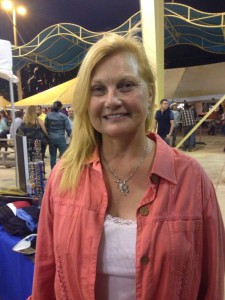A Rough Start

"You need to get to the barn immediately." These words jolted Beaverlea Roye-Manderbach, as she took an early-morning call in mid-October from one of her employees at Laota Spring Farm in Sinking Hill, PA.
One of her prize Paso Fino mares, Chaperona, had just given birth to a filly – six weeks early, and the filly was not moving.
“There was a little baby lying there,” described Manderbach, “Mom was standing over her.” Trained as a physician, Manderbach took the filly’s vitals and made sure the airway was open, then she and her foreman immediately loaded the mare in the trailer, the filly in the back seat with a pad, warm bottles, and blankets, and rushed to New Bolton Center.
"By the time we got there, the baby was making noise and trying to suckle," said Roye-Manderbach, a positive sign. "I made the decision right then to try and save her," said Roye-Manderbach.
When New Bolton Center emergency and internal medicine clinician Dr. Michelle Linton first met the little filly, she was in dire straits.
She was only a few hours old, more than a month premature and, at 29 pounds, at least 60 pounds underweight. Her vital signs were critical and her body temperature was 10 degrees below normal. She couldn’t stand because she was too weak and underdeveloped.
Linton, who specializes in neonates, knew they were facing a difficult set of challenges, but everyone was determined to give her a fighting chance.
The Effort of Survival: Each of Tamara Rose's problems was complex, and required immediate and intensive care. High doses of intravenous fluids were initiated. She was given intravenous fluids and medications to help regulate blood flow and to maintain her blood pressure. Because she was unable to take on colostrum or milk, nutrition was provided by an intravenous line and an insulin infusion was given to help her manage her nutrition. She was on seven fluid and mediation infusion pumps when she was at her most critical.
Part of the course of treatment was to keep Tamara Rose in a confined area in the dark to let her sleep and grow. Her environment was kept quiet to minimize stimulation and triggers for her seizures.
With the help of medications and supportive care, the seizures stopped. Medical-grade honey-infused patches helped to heal her wounds, and the tiny foal began to improve.
At just over 30 pounds, Tamara Rose was only allowed to stand with assistance, and for brief periods. Tamara Rose had incomplete ossification of her carpal and tarsal bones. "In other words, some bones in her joints were still cartilage and had not yet converted to bone," said Linton. "If too much pressure is placed on these joints, they will crush and lead to permanent deformation of bone and high risk for degenerative joint disease early in life."